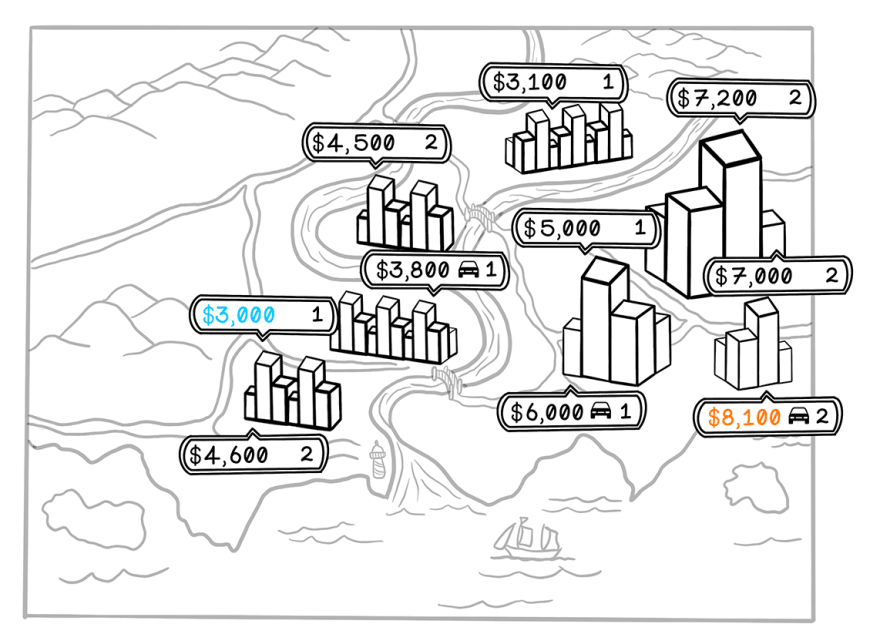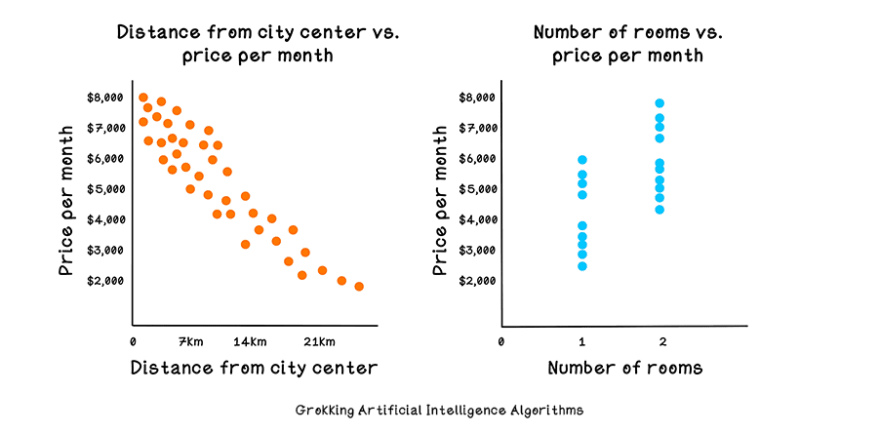Machine learning can seem like a daunting concept to learn and apply, but with the right framing and understanding of the process and algorithms, it can be interesting, useful, and fun. Let's explore apartment prices in a city.
Suppose that you’re looking for a new apartment. You speak to friends and family, and do some online searches for apartments in the city. You notice that apartments in different areas are priced differently.
A one-bedroom apartment in the city center (close to work) costs $5,000 per month. A two-bedroom apartment in the city center costs $7,000 per month. A one-bedroom apartment outside the city center, where you will need to travel to work, costs $3,000 per month.
You notice some patterns. Apartments in the city center are most expensive and are usually between $5,000 and $7,000 per month. Apartments outside the city are cheaper. Increasing the number of rooms adds between $1,500 and $2,000 per month.
This example shows how we use data to find patterns and make decisions. If you encounter a two-bedroom apartment in the city center with a garage, it’s reasonable to assume that the price would be about $8,000 per month.
Machine learning aims to find patterns in data for useful applications in the real world. We could spot the pattern in this small dataset, but machine learning spots them for us in large, complex datasets.
If you're interested in more details about ML algorithms, see Grokking AI Algorithms with Manning Publications: http://bit.ly/gaia-book, consider following me - @RishalHurbans, or join my mailing list for infrequent knowledge drops: https://rhurbans.com/subscribe.





Top comments (0)